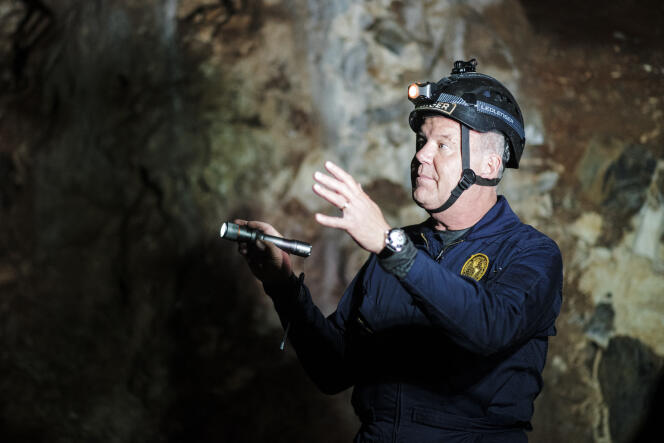In South Africa, the discovery of the first prehistoric burials


News shakes the foundations of human evolution: World-renowned paleontologist Lee Berger announced on Monday, June 5, the discovery of the oldest prehistoric burials in South Africa, going back at least 100,000 years to the first traces of the deadly practice.
In the shelves buried at the bottom of a network of narrow galleries, 30 meters below, distant cousins of man in a state of fossilization have been discovered during excavations in tombs. It started in 2018. The researchers found that the burials were filled with soil that was initially dug to create holes, which they say is evidence that the bodies of these prehumans were voluntarily buried.
“These are the oldest recorded hominid burials, predating Homo sapiens burials by at least 100,000 years”They report in a series of preprinted articles that have yet to be reviewed before publication in a scientific journal. eLife.
Excavations were conducted at the paleontological site “Cradle of Mankind”, is a UNESCO World Heritage Site and is located northwest of Johannesburg. The oldest burials discovered so far, particularly in the Middle East and Kenya, date back to around 100,000 BC and contain the remains of Homo sapiens.
For secret scientists
South African burials date from 200,000 to 300,000 years ago. They contain bonesHomo Naledi (star in the local language), a small hominid about 1.50 m tall and with a brain the size of an orange. The species, whose discovery in 2013 by the American paleoanthropologist Lee Berger has already called into question the linear question of human evolution, remains a mystery to scientists to this day.
containing both features of creatures millions of years old, such as primitive dentition and climber’s legs, Homo Naledi Also has legs and arms like ours that can handle tools. “These findings show that mortuary practices were not limited to Homo sapiens or other large-brained hominids.”– say scientists.
This theory, which contradicts the commonly accepted idea that the awareness of death and the practices associated with it make a person, was already mentioned by Lee Berger when he presented it. Homo Naledi in the world in 2015. The hypothesis caused an uproar at the time, and many specialists questioned the scientific rigor of the American media that supported it. National Geographic.
“It was too much for science at the time”, comments Lee Berger during an interview with AFP. They remain “I’m convinced that it all has to do with our big brains and that it happened very recently, less than 100,000 years ago.”he explains. “We’re going to tell the world it’s not true”The winner is the 57-year-old researcher who goes even further.
“Significant potential value”
Geometric symbols have been found on the walls of the tombs, carefully traced using a pointed or cutting tool. The squares, triangles, and crosses, he said, were intentionally left on smooth surfaces, perhaps for greater legibility. “This means that not only are humans not just evolved symbolic practices, but they may not even have invented such behavior.”– says Lee Berger.
Carol Ward, an anthropologist at the University of Missouri, believes that “These results, if confirmed, have significant potential implications.”. “I look forward to understanding how the placement of the remains rules out possible explanations other than deliberate burial and seeing the results when they are considered.”– he told AFP.
Further analyzes are still to be performed. But Lee Berger’s team already says that it will be necessary “A Review of the Whole Series of Hypotheses on Hominid and Human Evolution”. For a long time, researchers associated the ability to master fire, engraving or painting with the cerebral power of modern humans, as is characteristic of the Cro-Magnon. “Funeral, meaning-making, and even art may have far more complex and non-human origins than we thought.”Agustin Fuentes, an anthropologist at Princeton University and co-author of the findings, predicts.
Source: Le Monde
Leave a Reply